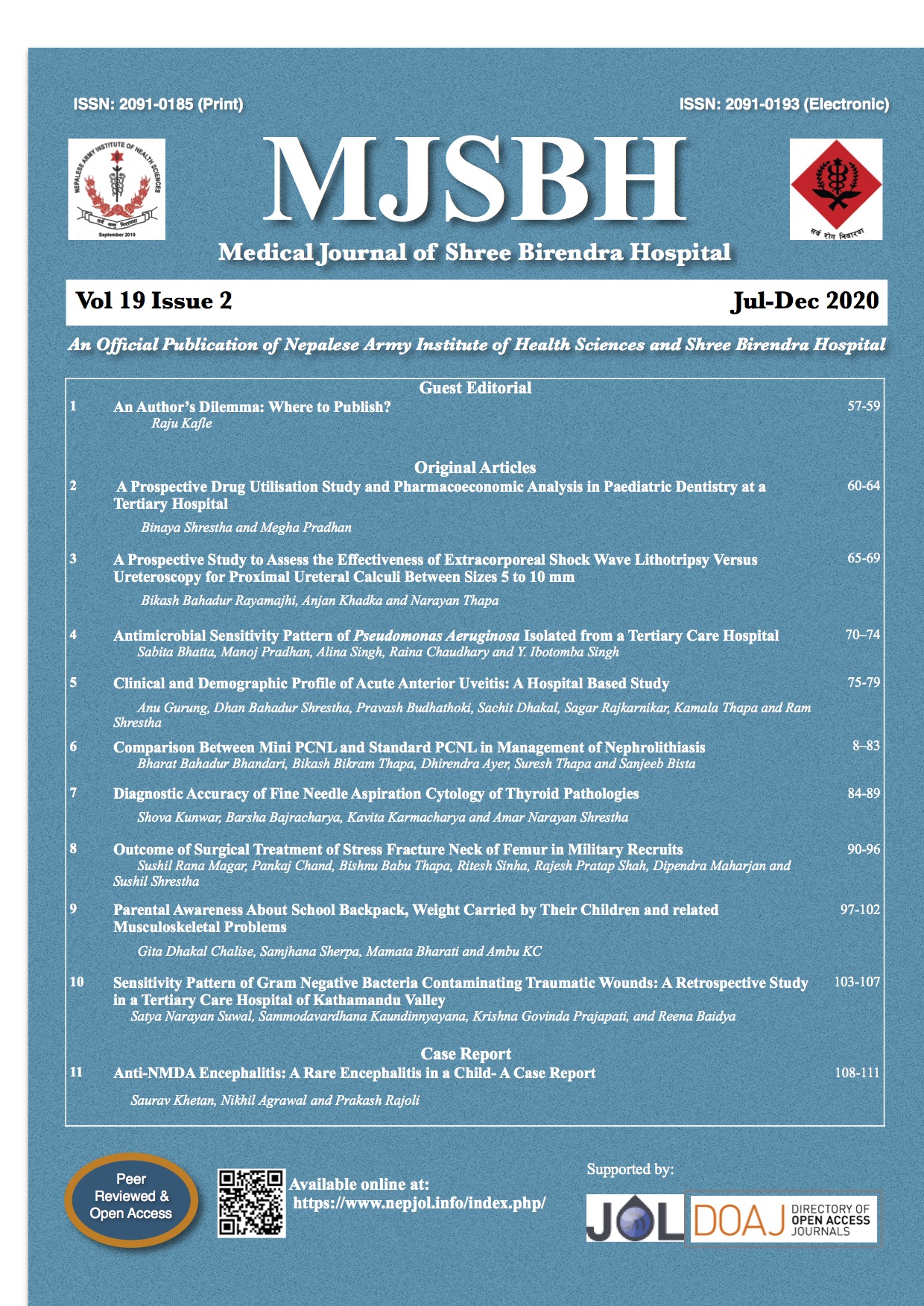Outcome of Surgical Treatment of Stress Fracture Neck of Femur in Military Recruits
Keywords:
avascular necrosis, cancellous lag screw, fibular strut graft, interfragmentary compression, osteosynthesisAbstract
Introduction: Stress fracture of neck of femur is known to occur in athletes and soldiers. From treatment perspective, this is still an unsolved fracture. The purpose of this study is to critically analyse the functional outcome of surgical treatment of stress fracture of neck of femur in military recruits performed by the same surgical team.
Methods: This is a retrospective study of surgically treated femoral neck stress fracture from 1st December 2012 to 1st December 2013. All fractures were fixed with three 6.5 mm cancellous lag screws with washers. For failure of primary fixation or non-union, osteosynthesis with fibular strut graft was performed. Patients were evaluated at six weeks, 12 weeks, six months, 12 months and then yearly for three years. Functional outcome was evaluated by using Harris Hip Score at six months and at final follow-up. The outcome was followed up for six years up to Dec 2019.
Results: There were eight males and one female patient. Mean age of patient was 20.7 years (Range, 19-23 years). Average follow-up period was 67.6 months (range 6-81). Lag screw fixation was done in five cases after closed reduction and in four cases after open reduction. Osteosynthesis with fibular graft was done in two cases. In six cases, fracture united at a mean duration of 9.8 months (Range 6-20). In three cases there was non-union of the fracture with added infection in one case. Avascular necrosis of femoral head developed in two cases.
Conclusions: Successful surgical treatment of stress fracture of neck of femur requires anatomical reduction and stable interfragmentary compression with lag screws.
Downloads
Downloads
Published
How to Cite
Issue
Section
License
This license enables reusers to distribute, remix, adapt, and build upon the material in any medium or format for noncommercial purposes only, and only so long as attribution is given to the creator.




